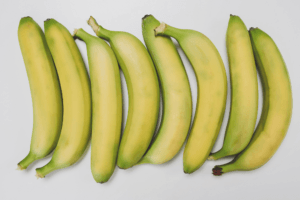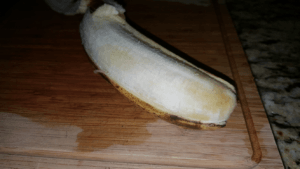
Focusing on bananas, this is the third installment in the tyramine close-up series. We consume bananas all year around and they contain so much goodness. From vitamin B6, vitamin C, magnesium, and potassium, this fruit is packed with things that our bodies require. Furthermore, they are sweet and tasty and go so well together with cereal in the morning, various shakes, ice cream, and just about everything else.
The good news with bananas
How many of us haven’t heard the Chiquita Banana jingle?
“I’m Chiquita banana and I’ve come to say – Bananas have to ripen in a certain way – When they are fleck’d with brown and have a golden hue – Bananas taste the best and are best for you – You can put them in a salad – You can put them in a pie-aye – Any way you want to eat them – It’s impossible to beat them – But, bananas like the climate of the very, very tropical equator – So you should never put bananas in the refrigerator.“
Now for the bad news
Most of us will say, “Well, of course. You should never put them in the fridge.” This is what we are taught. But for me, as a migraine sufferer, that last part of the jingle used to be the most disheartening. That’s right, it used to be, but more on this to come…
For now, let’s focus on the formation of tyramine, a biogenic amine that increases as food ages. Those of you, who have read the articles on watermelon and strawberries, won’t find this to be new. However, if you haven’t read about biogenic amines, I would encourage you to do so here.
The short of it is that tyramine can be a vicious trigger for most of us with migraines. The longer those bananas sit out in our kitchen, the greater the amount of tyramine. But that’s not the worst of the ripening process.
The crazy ripening process for bananas
How many of you know that bananas are picked green and are then aggressively ripened in special locations in the destination countries? That’s right. A compound called ethylene gas is used to induce artificial ripening. This process causes bananas to go from green to yellow. Yikes! For those of you who are interested in reading more about the process, I am including the link here.
When you and I later find the fruit in our grocery stores, we assume they are fresh. Well, perhaps fresh to some but not for us. In fact, they have spent weeks in storage, using a process that is designed to extend the shelf life of the banana.
The bottom line is this. Even if you buy bananas fresh from the grocery store, chances are good that they have been sitting there for a day or too. Never mind the amount of time that the bananas have been stored and in transit.
So is there anything we can do to ensure that the tyramine triggers are avoided?
There is no easy answer for migraine sufferers.
No matter how fresh you think that the fruit is, it will contain fair amounts of tyramine, plain and simple. I avoid bananas for this simple fact. However, there are steps you can take to at least preserve the freshness, after the bananas are brought into your home.
Step 1
When we buy bananas, the color should be a mix of yellow and green, but mostly green. This ensures that the fruit is not over ripe. For migraine sufferers, it is preferable to go with under ripe, as opposed to over ripe.

And, if the color includes any brown specks, however small, we need to avoid picking those. When you peel back the banana peel, it should break along the length. The fibers should crack. That is a sign of the fruit not being over ripe. If, on the other hand, it peels back in a smooth fashion, perhaps coming apart, the banana is way beyond its expiration date.


It is also important to look at the top of the bunch. If it appears dirty, brown, and sometimes includes moisture on the outside of the skin, then it’s time to throw it away.

Step 2
We put the bananas in the refrigerator. Wait, what? Even the jingle tells us not do so, and isn’t that the gospel? It used to be, but no longer. Even though the outside of the fruit will turn brown and eventually black inside the refrigerator, the inside will stay fresh much longer than would be the case if left outside. Who cares about the color of the peel if refrigeration extends the freshness?
This doesn’t mean that tyramine stops building. On the contrary, the aging process continues, but at a slightly reduced pace. This is one of the reasons that I try not to mess around with bananas at all, even though I find them so delicious.
Step 3
Freeze immediately, if you intend on using the bananas for shakes or as an ingredient for something like banana bread. Whatever you do, don’t put spoiled bananas in the freezer! That will do absolutely nothing to reduce the tyramine content. Instead, all this will accomplish is to preserve the current level of tyramine in the fruit.
Conclusion
If you are going to buy the fruit, make sure to buy under ripe as opposed to over ripe bananas. And, for goodness sake, don’t buy too much. It is better to go back to the store in a day or two. Also, don’t be afraid to refrigerate the bananas, once they are brought into your home. The jingle never considered those of us with migraines, however catchy the tune might be. With this is mind, here are my suggestions.
IMPORTANT TIPS:
- ALWAYS buy bananas with a green color as opposed to yellow
- ALWAYS use refrigeration
- NEVER eat past 48 hours, regardless of freshness
- ALWAYS freeze bananas fresh
- NEVER eat away from your home
- When in doubt ALWAYS discard
If you want to estimate the tyramine content of bananas, in addition to other foods, use the Tyramine Calculator.
